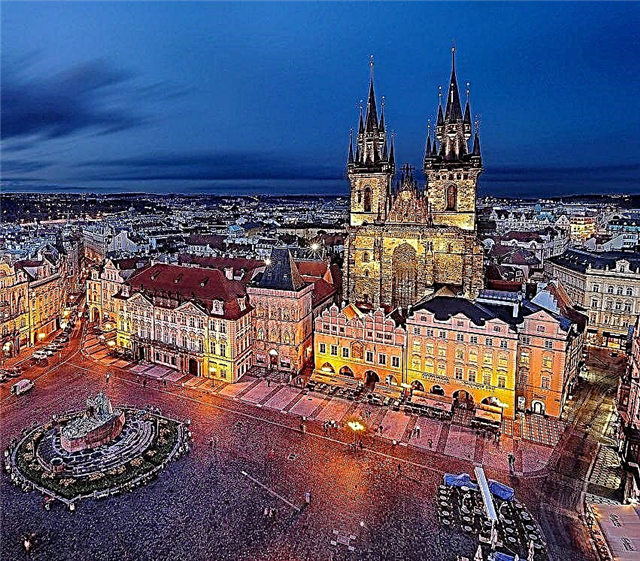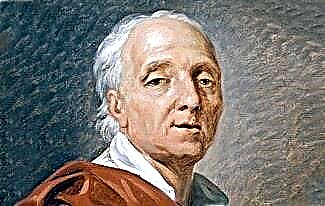Suleiman I the Magnificent (Qanuni; 1494-1566) - the 10th Sultan of the Ottoman Empire and the 89th Caliph from 1538. Considered the greatest sultan of the Ottoman family; under him, the Ottoman Porta reached its peak.
In Europe, the Sultan is usually called Suleiman the Magnificent, while in the Muslim world, Suleiman Qanuni.

There are many interesting facts in the biography of Suleiman the Magnificent, which we will talk about in this article.
So, before you is a short biography of Suleiman I the Magnificent.
Biography of Suleiman the Magnificent
Suleiman the Magnificent was born on November 6, 1494 (or April 27, 1495) in the Turkish city of Trabzon. He grew up in the family of the Sultan of the Ottoman Empire Selim I and his concubine Hafsah the Sultan.
The boy received an excellent education, since in the future he was to be well versed in state affairs. In his youth, he was the governor of 3 provinces, including the vassal Crimean Khanate.
Even then, Suleiman showed himself as a wise ruler, which won over his compatriots. He headed the Ottoman state at the age of 26.
Sitting on the throne, Suleiman the Magnificent ordered the release from the dungeons of hundreds of captive Egyptians who came from noble families. Thanks to this, he managed to establish trade relations with various states.
This gesture made the Europeans happy, who had high hopes for long-term peace, but their expectations were in vain. Although Suleiman was not as bloodthirsty as his father, he still had a weakness for conquest.
Foreign policy
A year after ascending to the throne, the sultan sent 2 ambassadors to the monarch of Hungary and Bohemia - Lajos, wishing to receive a tribute from him. But since Laishou was young, his subjects rejected the claims of the Ottomans, imprisoning the ambassador.
When it became known to Suleiman I, he went to war against the disobedient. In 1521 his soldiers captured the Sabac fortress and then laid siege to Belgrade. The city resisted as best it could, but when only 400 soldiers remained of its military units, the fortress fell, and the Turks killed all the survivors.

After that, Suleiman the Magnificent won victories one by one, becoming one of the strongest and most powerful rulers in the world. Later he took control of the Red Sea, Hungary, Algeria, Tunisia, the island of Rhodes, Iraq and other territories.
The Black Sea and the eastern Mediterranean regions also came under the control of the Sultan. Further, the Turks subjugated Slavonia, Transylvania, Bosnia and Herzegovina.
In 1529, Suleiman I the Magnificent, with an army of 120,000, went to war against Austria, but could not conquer it. The reason for this was the outbreak of an epidemic that claimed the lives of about a third of the Turkish soldiers.
Perhaps only the Russian lands were uninteresting for Suleiman. He considered Russia a deaf province. And yet the Turks periodically raided the cities of the Muscovite state. Moreover, the Crimean Khan even approached the capital, but a large military campaign was never organized.
By the end of the reign of Suleiman the Magnificent, the Ottoman Empire had become the most powerful state in the history of the Muslim world. Over the years of his military biography, the Sultan carried out 13 large-scale campaigns, of which 10 in Europe.
In that era, the expression "Turks at the gates" terrified all Europeans, and Suleiman himself was identified with the Antichrist. Yet military campaigns did great damage to the treasury. Two-thirds of the funds received by the treasury were spent on the maintenance of a 200,000-strong army.
Domestic policy
Suleiman was called “Magnificent” for a reason. He was successful not only in the military field, but also in the internal affairs of the empire. By his decree, the code of laws was updated, which operated successfully until the 20th century.
The execution and mutilation of criminals has decreased significantly. However, bribe-takers, false witnesses and those who engaged in counterfeiting continued to lose their right hand.
Suleiman ordered to reduce the pressure of Sharia - a set of precepts that determine beliefs, as well as form the religious conscience and moral values of Muslims.
This was due to the fact that representatives of different religious trends coexisted next to the Ottoman Empire. The Sultan ordered the development of secular laws, but some of the reforms were never carried out due to frequent wars.

Under Suleiman 1 the Magnificent, the education system improved noticeably. New elementary schools were regularly opened in the state, and graduates had the right to continue their education in colleges. Also, the ruler paid great attention to the art of architecture.
Favorite architect of Suleiman - Sinan, built 3 monumental mosques: Selimiye, Shehzade and Suleymaniye, which became an example of the Ottoman style. It is worth noting that the Sultan showed great interest in poetry.
The man himself wrote poetry, and also provided support to many writers. During his reign, Ottoman poetry was at its peak. An interesting fact is that then a new position appeared in the state - a rhythmic chronicler.
Such posts were received by poets who had to describe current events in a poetic style. In addition, Suleiman the Magnificent was considered an excellent blacksmith, personally casting cannons, as well as an expert in jewelry.
Personal life
Suleiman's biographers still cannot agree on how many women actually were in his harem. It is reliably known only about the official favorites of the ruler, who bore him children.
The first concubine of the 17-year-old heir was a girl named Fülane. They had a common child, Mahmud, who died of smallpox at the age of 9. It is worth noting that Fülane played almost no role in the biography of the Sultan.
From the second concubine, Gulfem Khatun, Suleiman the Magnificent had a son, Murad, who also died in childhood from smallpox. In 1562, a woman was strangled by order of the ruler. The third concubine of the man was Mahidevran Sultan.

For 20 long years, she had great influence in the harem and at court, but she could not become the wife of Suleiman the Magnificent. She left the state with her son Mustafa, who was the governor of one of the provinces. Mustafa was later sentenced to death on suspicion of conspiracy.
The next favorite and the only concubine of the Sultan, with whom he married in 1534, was the captive Khyurrem Sultan, better known as Roksolana.
Roksolana managed to masterfully influence her husband's decisions. By her order, he got rid of the sons born of other concubines. Alexandra Anastasia Lisowska gave birth to her husband a girl Mihrimah and 5 sons.
One of the sons, Selim, led the Ottoman Empire after the death of his father. During his reign, the empire began to fade. The new sultan liked to spend time in fun, rather than doing state affairs.
Death
Suleiman died, as he wanted, in the war. This happened during the siege of the Hungarian citadel of Szigetavr. Suleiman I the Magnificent died on September 6, 1566 at the age of 71. He was buried in the tomb, next to the Roksolana mausoleum.
Photo of Suleiman the Magnificent













